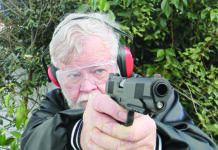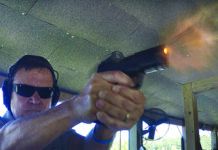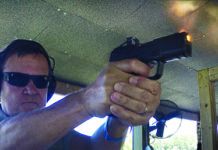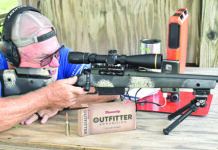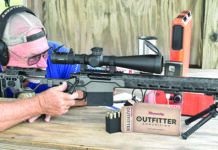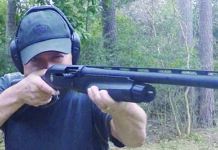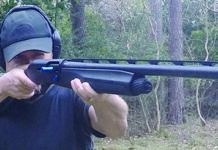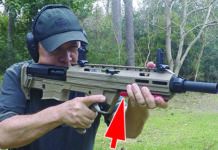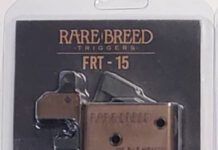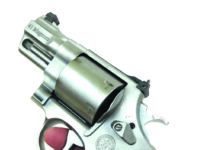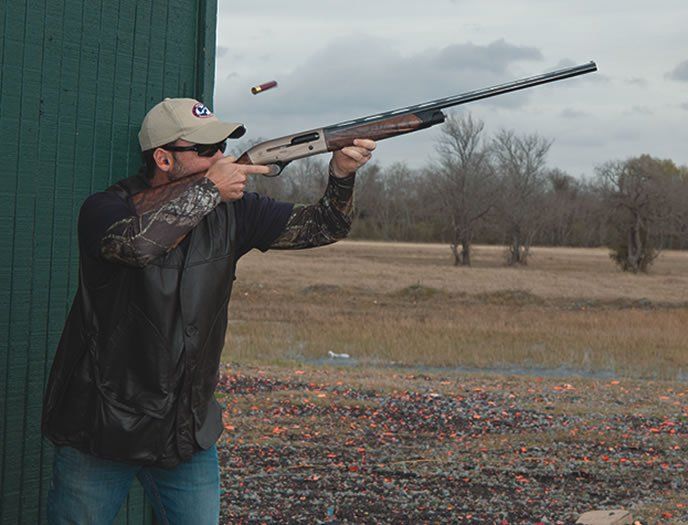
“28-Gauge Semi-Automatics: Legacy Sport Versus Beretta,” May 2015
After reading your article on the Beretta A400 in 28 gauge, I ordered it the next business day. It was received two days later and I shot a 23 with it at skeet. This was my first-ever experience shooting a 28-gauge gun. Roger Eckstine’s write-up was spot-on for this gun, now my favorite. I have added a color-coordinated bolt release and a mid-bead. Likewise, an earlier Gun Tests article prompted me to get an S&W M&P in 22 LR rather than the Walther that I originally was going to purchase. Your reviews are priceless. Thank you.— Darwin
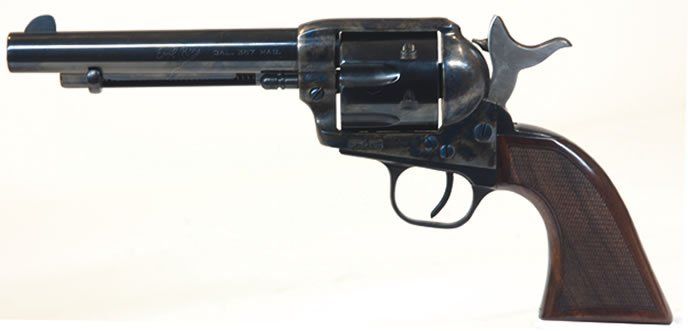
Re “Cimarron Evil Roy No. ER4104 357 Magnum” on Gun-Tests.com
When looking for an Evil Roy to purchase, I found that there is indeed offered a 4.75-inch-barrel version in both blue/case hardening as well as in stainless. Not being really interested in keeping with the original look, I went with the stainless version and could not be happier. On my pull gauge, the trigger broke at a bit above 2.4 pounds, which is simply superb and may lighten further as I break it in. I have fired a variety of all kinds and weights of both 38 Special and 357 Magnum, and you do have to adjust a bit for elevation, but as the reviews in the article stated, at 10 yards the gun was right on, windage wise, with all calibers fired. Also, the workmanship is superb.
Like one of the reviewers stated, if I were to feed my revolver a steady diet of 357 Magnum rounds or use it for hunting loads, I, too, might go with the Ruger, especially if I could find one of the old-fashioned original-framed variants on the used market. It’s a larger gun, but you cannot find a stronger revolver frame. You can, of course, have an action job performed on the old-style Vaquero, making for one monster of a great single-action revolver. But I have nothing but praise so far for my stainless 4.75-inch-barreled Cimarron Evil Roy. Love the gun just as it came right out of the box!
— “Barbarosa Guns”
To read the full review online, subscribers can log in and put the model name “ER4104” in the top right search field (no quote marks), or simply navigate to the August 2012 issue, page 15. — Todd Woodard
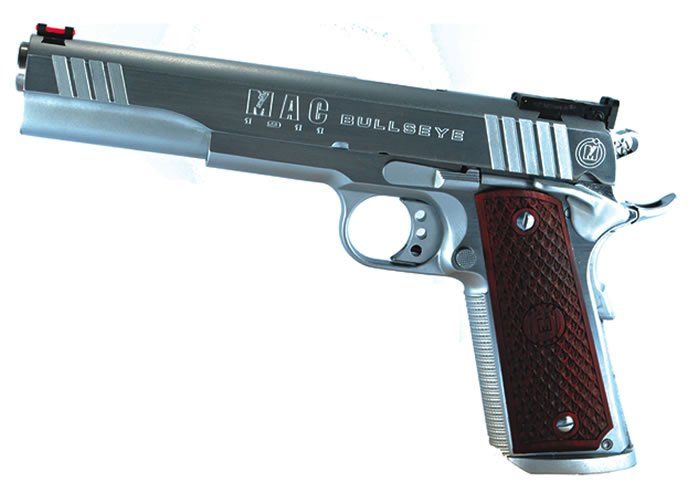
Re July 2015
In Robert Sadowski’s story about Smith snubbies, while a trigger stop may give marginally quicker reset, its primary value is limiting overtravel when the sear breaks. With a properly adjusted trigger stop, the gun’s alignment is minimally disturbed as it discharges, improving one’s accuracy. The shooter cannot continue to move the trigger, as its resistance suddenly drops after the break, causing an errant shot. As a long-time conventional pistol (Bullseye) and double-action-revolver competitor (Master class for both), I can attest to this. However, adjusting a trigger stop very closely, so that the trigger stops just as the hammer falls, should never be done with a handgun intended for self-defense. The smallest bit of debris can result in a non-firing handgun.
Further, with the older S&Ws having the oblong stops in a milled slot in the frame behind the trigger, if the screw loosens, the oblong stop can rotate and prevent the gun from firing. Saw that once in a DA revolver match. Bottom line: Trigger stops do not belong on a serious self-defense handgun.
In addition to the preceding point, those ridiculous short barrels alone should preclude consideration of either as a viable self-defense choice. A longer barrel, say 3.5 inches, would significantly improve not only ballistics, but also functionality by allowing full ejection of the spent cases and a longer sight radius. This would not materially affect concealment. Given the girth of either and the large grips, concealment on anyone but the largest amongst us is a real challenge, regardless of barrel length. Also, scandium-framed Smiths have longer, larger grips to counteract the enhanced (brutal?) recoil of such incredibly light revolvers. For a large 45 ACP self-defense handgun, get a 1911 or, better yet, a Glock.
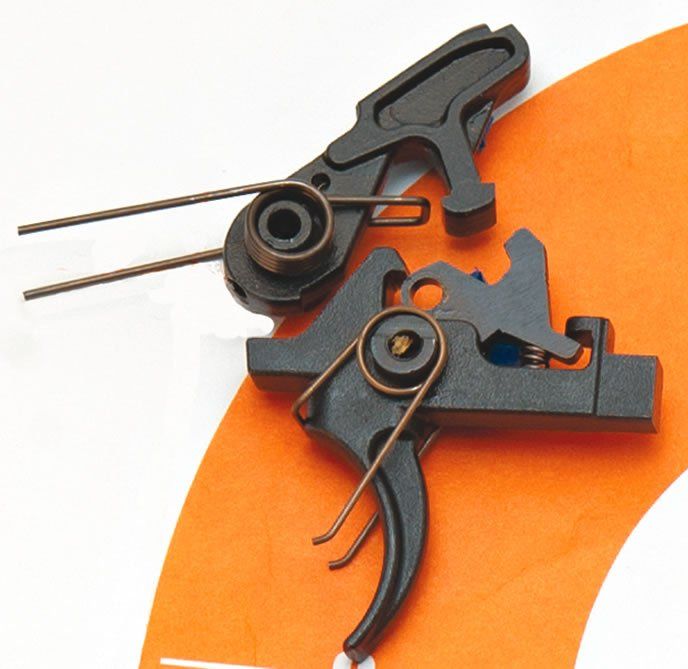
Speaking of 1911s, it was good to see Robert Campbell’s MAC Bullseye vs. Colt Gold Cup comparison. However, I must disagree with deducting points for the Gold Cup’s grips. For match work, for which these pistols are clearly intended, one really should install proper target grips with an adjustable heel pad. That said, my Gold Cup with Pachmayr grips has shot numerous 45 ACP matches of 280+ (out of 300.) Remember, the crucial points of contact for the grip are the front and backstraps. We’ve proven that to many new shooters by having them shoot 1911s sans grips.
Also, criticizing the MAC Bullseye for its slower draw is ridiculous. First, it is intended to be a Bullseye competition pistol, not a carry piece. Second, it is not a wise choice for self-defense. Both it and the Gold Cup are very tightly fitted. Again, it doesn’t take much grit or other foreign material to stop either cold. Finally, the recoil springs are generally weaker to accommodate target loads. This results in accelerated wear with full 45 ACP loads. And don’t think about replacing the recoil spring with a heavier one without also replacing the firing pin, sear, and mainsprings. A heavy recoil spring can slam the slide forward hard enough so that the inertia of the firing pin overwhelms the firing pin spring, resulting in uncontrollable full auto.
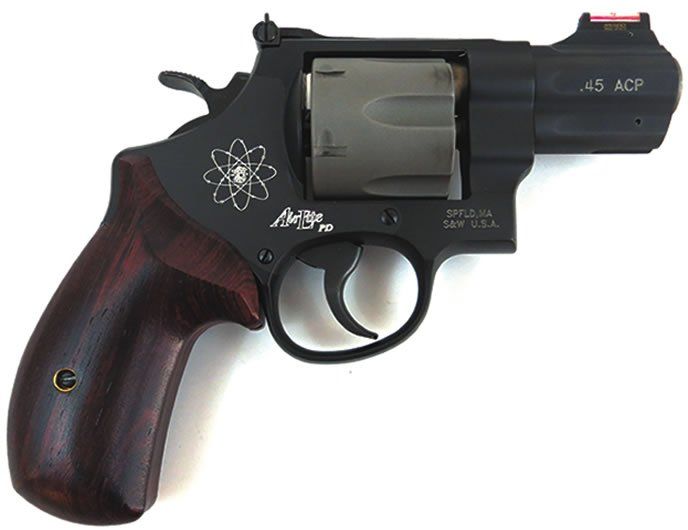
That said, comparing velocities and energies of the snubbies and the 1911s reveals that the 1911s deliver about 10% greater velocity, thus 20% greater (kinetic) energy for the same (or comparable) load. Which would you prefer?
Regarding Roger Eckstine’s article about AR-15 triggers, this is a nice start. Given the number of MSRs out there, a more comprehensive compendium of your AR-15 trigger tests would be greatly appreciated. It would have been nice to see more about the double-stage triggers and their benefits.
For the AR-15 in high power competition, the Milazzo-Krieger is a favorite. Unfortunately, they’re about as easy to find as a brick of reasonably priced 22 LR ammo. The Ruger Elite 452 sure looks like the M-K. As to other triggers, we’d like to see the CMC, Geissele, Jewell, and Timney offerings included in the compendium.
— RAJ
In the October 2013 issue, Ray Ordorica evaluated the Timney 668-S Trigger (Small Pin, 3-pound pull), the Geissele SSA-E (Super Semi-Automatic Enhanced) Trigger, and the Geissele Hi-Speed National Match Trigger.
— tw
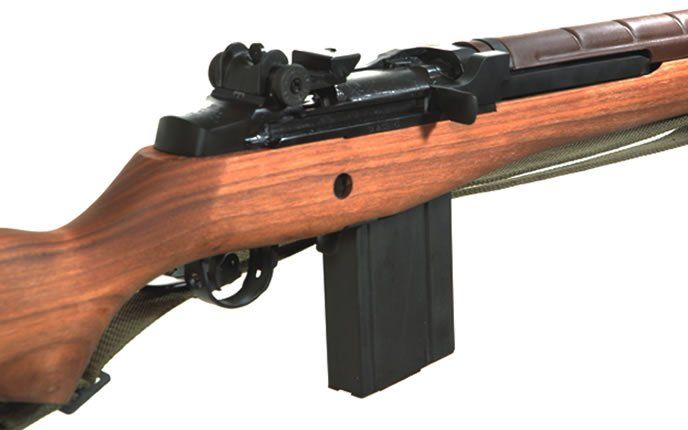
M-14 Clones
Just started a subscription with your publication, and I enjoy it very much. Your reviews are all meat and potatoes, and no parsley. Have you done any testing of the M-14 clones against each other, or against other similar battle rifles of the 50s and 60s? If so, I would be happy to purchase your results. Thank you for your time, and once again, well done on your publication.—JD
Hey JD: As a paid subscriber, you have free access to our electronic archives. To read more about these battle rifles, type “M-14” and “M14” in the top right search field (no quote marks, and some makers style the names differently). Some rifles that meet your criteria are the Fulton Armory M14 and Polytech M14/S Customized in the December 2010 issue and the Fulton Armory Peerless NM M14 Rifle in the April 2010 issue. There are many others, however. Scroll the “Gun Tests Index 2014-1989 Updated” file or use the “Compare Guns” feature and choose Rifles>.301 to .400> and click all the price check marks. Some other guns that come up are FAL SA58, the Ruger SR-762 Autoloading Rifle, the Springfield Armory Socom 16 No. AA9625, the Century Arms International R1A1 Sporter Rifle, the Imbel Sporter, and many others, depending on how widely you want to consider the category. — tw
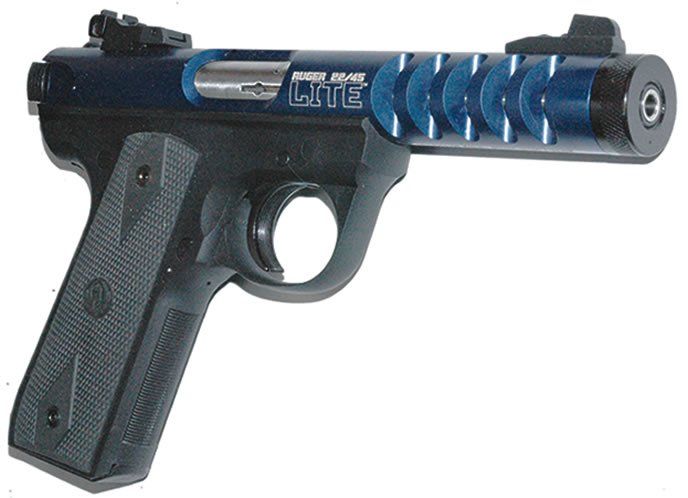
Re “Three Trail Companions We Like,” May 2015
Enjoy your magazine. However, the 22/45 Ruger with slotted barrel shroud is ridiculous! I slept with an M-14 for a year in Vietnam. Monsoon weather with sand blowing on the beach and mud everywhere is hard on equipment. You want as few openings on a firearm as possible. I used to return from beach duty caked in sand. I and my M-14 went straight to the shower, and I washed all the sand off both of us, of course without its stock.
— Tom
Hey Tom: Thank you for a mental image we can never forget. But we take your point. Still, there is a lot less area on the Ruger 22/45 barrel to be problematic, even on a trail gun that will see plenty of dirt. — tw
Over/Under Shotguns
I read with great interest your review of the Browning Citori Crossover in the April 2015 issue. I am looking to buy a gun that I can use to shoot trap, skeet, and sporting clays. Would like to find one that will serve all three, and it seemed the Crossover may work. In the review Ralph Winingham mentioned, the “Browning Crossover is nearly at the top end of what we would consider as the moderately priced category of all-round shotguns.” Could you tell me what other guns you would include in this group? I ask because I have not found a dealer who has the Crossover in stock. Appreciate any guidance you can provide. Keep up the great work you all do in putting together your publication.
— Art
Hey Art: Some other break-actions we’ve tested and liked include the side-by-side Beretta 471 Silver Hawk J471210 and the Weatherby Athena D’Italia; the Lanber 2097 Sporting Lux o/u, the Ruger All-Weather Red Label o/u, Browning’s Citori XS Sporting and Cynergy Sporting, and others. Check our archives for “view by action” and select “break action” to sort down what we’ve tested over the years. — tw



